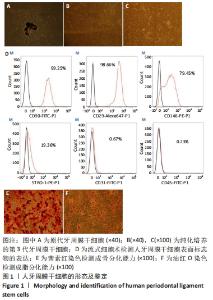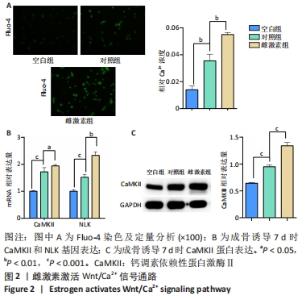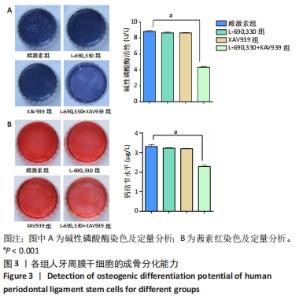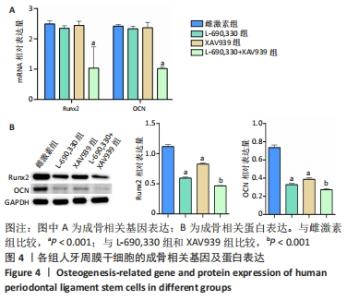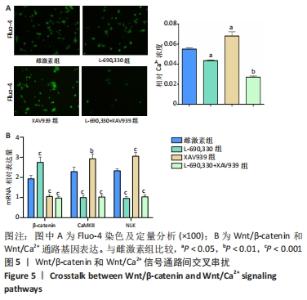[1] CHALISSERRY EP, NAM SY, PARK SH, et al. Therapeutic potential of dental stem cells. J Tissue Eng. 2017;8:2041731417702531.
[2] BASSIR SH, WISITRASAMEEWONG W, RAANAN J, et al. Potential for Stem Cell-Based Periodontal Therapy. J Cell Physiol. 2016;231(1):50-61.
[3] 李晓钰,王红,谷秀格,等.年龄因素对牙周膜干细胞多向分化能力的影响[J].口腔生物医学,2019,10(2):78-82.
[4] BOTELHO J, CAVACAS MA, MACHADO V, et al. Dental stem cells: recent progresses in tissue engineering and regenerative medicine. Ann Med. 2017;49(8):644-651.
[5] WANG P, WANG W, GENG T, et al. EphrinB2 regulates osteogenic differentiation of periodontal ligament stem cells and alveolar bone defect regeneration in beagles. J Tissue Eng. 2019;10:2041731419894361.
[6] 李微,张博,张雨薇,等.雌激素调节骨代谢作用的研究进展[J].中国骨质疏松杂志,2017,23(2):262-266.
[7] 刘云,罗晓婷,李崇,等.雌激素治疗绝经后骨质疏松症的研究进展[J].实用临床医学,2020,21(10):91-96.
[8] JI MX, YU Q. Primary osteoporosis in postmenopausal women. Chronic Dis Transl Med. 2015;1(1):9-13.
[9] 马刚,李理,覃永保,等.大鼠双侧卵巢切除术后不同时期血清骨生化标志物与骨小梁三维结构变化之间的研究[J].医学研究杂志,2016, 45(5):76-80.
[10] KHOSLA S, OURSLER MJ, MONROE DG. Estrogen and the skeleton. Trends Endocrinol Metab. 2012;23(11):576-581.
[11] 张文韬,陈勋,宋涛,等.缺氧诱导因子抑制剂对去卵巢大鼠骨质疏松症治疗效果的研究[J].中国骨质疏松杂志,2018,24(12):1601-1605.
[12] JIANG B, XU J, ZHOU Y, et al. Estrogen Enhances Osteogenic Differentiation of Human Periodontal Ligament Stem Cells by Activating the Wnt/β-Catenin Signaling Pathway. J Craniofac Surg. 2020;31(2):583-587.
[13] DE A. Wnt/Ca2+ signaling pathway: a brief overview. Acta Biochim Biophys Sin (Shanghai). 2011;43(10):745-756.
[14] ISHITANI T, KISHIDA S, HYODO-MIURA J, et al. The TAK1-NLK mitogen-activated protein kinase cascade functions in the Wnt-5a/Ca(2+) pathway to antagonize Wnt/beta-catenin signaling. Mol Cell Biol. 2003;23(1):131-139.
[15] MARTINEAU X, ABED É, MARTEL-PELLETIER J, et al. Alteration of Wnt5a expression and of the non-canonical Wnt/PCP and Wnt/PKC-Ca2+ pathways in human osteoarthritis osteoblasts. PLoS One. 2017;12(8):e0180711.
[16] LI S, HU C, LI J, et al. Effect of miR-26a-5p on the Wnt/Ca(2+) Pathway and Osteogenic Differentiation of Mouse Adipose-Derived Mesenchymal Stem Cells. Calcif Tissue Int. 2016;99(2):174-186.
[17] 张世蘋,张旭.Wnt信号通路在肿瘤调控方面的研究进展[J].中国药理学通报,2017,33(1):14-18.
[18] BARON R, GORI F. Targeting WNT signaling in the treatment of osteoporosis. Curr Opin Pharmacol. 2018;40:134-141.
[19] RANDALL RM, SHAO YY, WANG L, et al. Activation of Wnt Planar Cell Polarity (PCP) signaling promotes growth plate column formation in vitro. J Orthop Res. 2012;30(12):1906-1914.
[20] DIAZ DE BARBOZA G, GUIZZARDI S, TOLOSA DE TALAMONI N. Molecular aspects of intestinal calcium absorption. World J Gastroenterol. 2015;21(23): 7142-7154.
[21] HUANG SM, MISHINA YM, LIU S, et al. Tankyrase inhibition stabilizes axin and antagonizes Wnt signalling. Nature. 2009;461(7264):614-620.
[22] KÜHL M, SHELDAHL LC, PARK M, et al. The Wnt/Ca2+ pathway: a new vertebrate Wnt signaling pathway takes shape. Trends Genet. 2000;16(7):279-283.
[23] TORRES MA, YANG-SNYDER JA, PURCELL SM, et al. Activities of the Wnt-1 class of secreted signaling factors are antagonized by the Wnt-5A class and by a dominant negative cadherin in early Xenopus development. J Cell Biol. 1996;133(5):1123-1137.
[24] MINASHIMA T, KIRSCH T. Annexin A6 regulates catabolic events in articular chondrocytes via the modulation of NF-κB and Wnt/ß-catenin signaling. PLoS One. 2018;13(5):e0197690.
[25] NARENDRA TALABATTULA VA, MORGAN P, FRECH MJ, et al. Non-canonical pathway induced by Wnt3a regulates β-catenin via Pyk2 in differentiating human neural progenitor cells. Biochem Biophys Res Commun. 2017;491(1):40-46.
[26] 曹文达,蒋世一,鲁晓杰.基于iTRAQ技术的无功能性垂体瘤血清蛋白质组学分析[J].临床神经外科杂志,2017,14(3):220-224.
[27] PASSOS-SOARES JS, VIANNA MIP, GOMES-FILHO IS, et al. Association between osteoporosis treatment and severe periodontitis in postmenopausal women. Menopause. 2017;24(7):789-795.
[28] LÓPEZ-MARCOS JF, GARCÍA-VALLE S, GARCÍA-IGLESIAS AA. Periodontal aspects in menopausal women undergoing hormone replacement therapy. Med Oral Patol Oral Cir Bucal. 2005;10(2):132-141.
[29] VIALE-GARRONE A, TAVITIAN P, TARDIVO D, et al. Relationship between menopause and tooth loss. Odontostomatol Trop. 2013;36(144):56-64.
[30] 姚丽,黄薇,刘莹.雌激素替代疗法对绝经期骨质疏松伴牙周病患者系统治疗的影响[J].中国骨质疏松杂志,2015,21(2):196-198.
|
